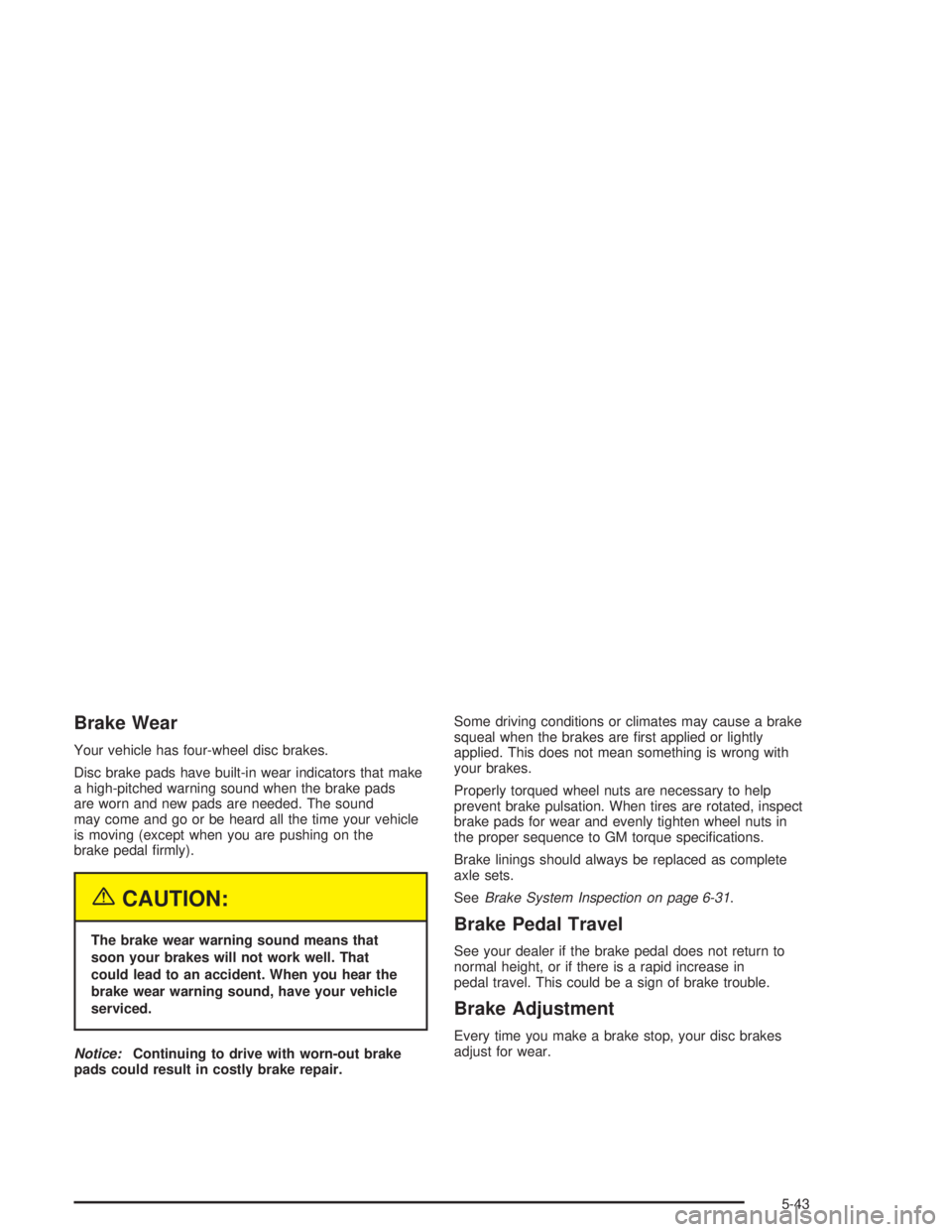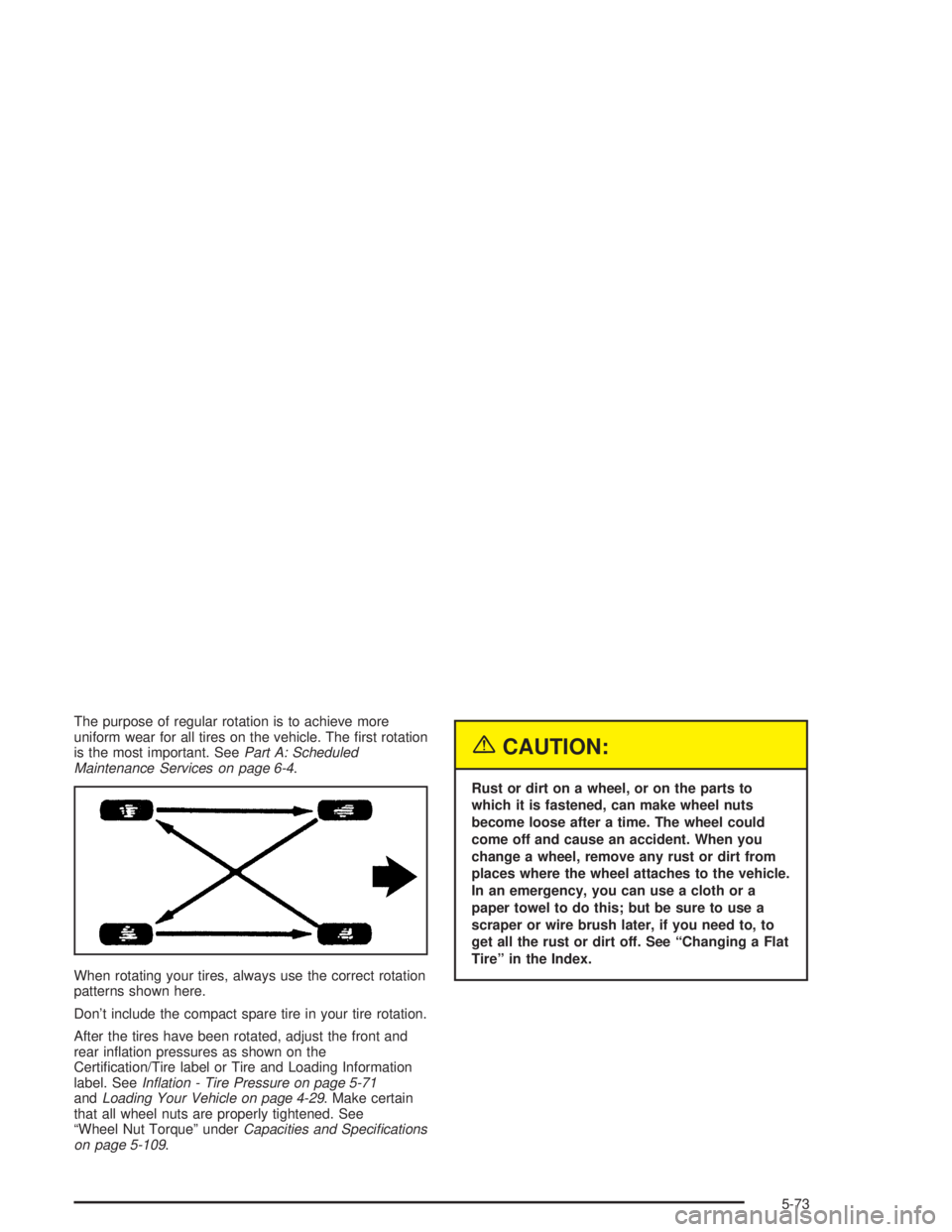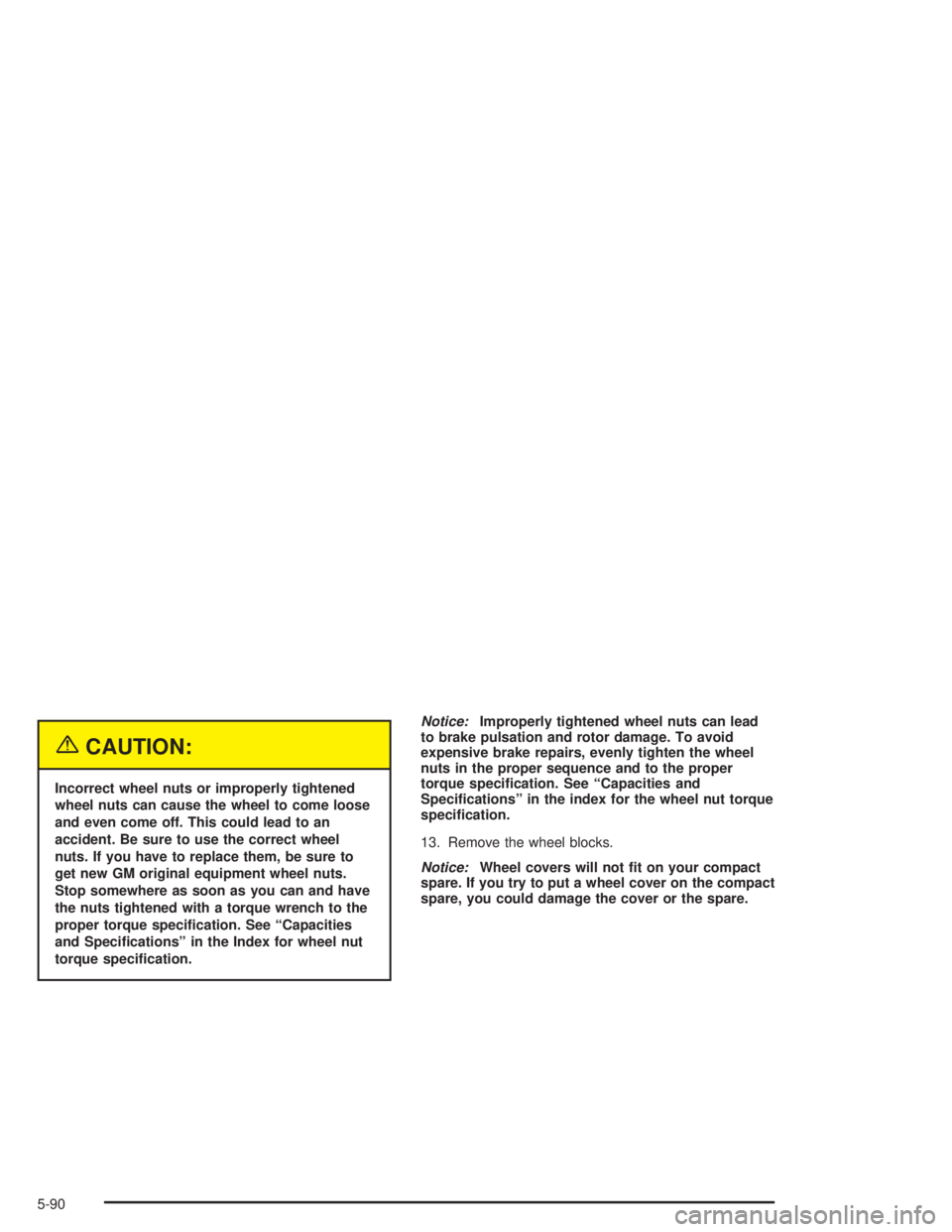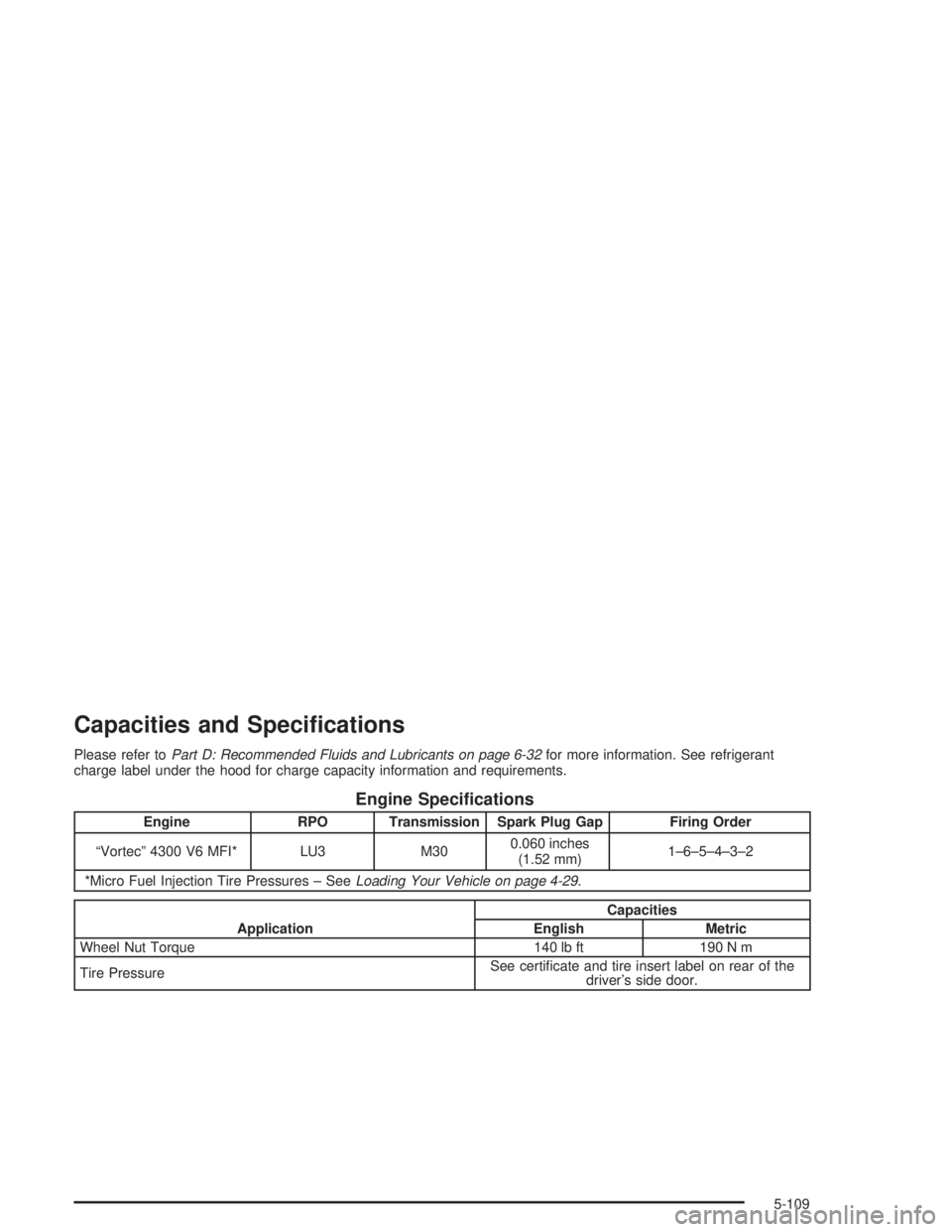torque GMC SAFARI 2004 Owner's Manual
[x] Cancel search | Manufacturer: GMC, Model Year: 2004, Model line: SAFARI, Model: GMC SAFARI 2004Pages: 394, PDF Size: 4.38 MB
Page 101 of 394

If you manually select SECOND (2), the transmission
will drive in second gear. You may use this feature
for reducing torque to the rear wheels when you
are trying to start your vehicle from a stop on slippery
road surfaces.
FIRST (1):This position gives you even more power
(but lower fuel economy) than SECOND (2). You
can use it on very steep hills, or in deep snow or mud.
If the shift selector lever is put in FIRST (1), the
transmission won’t shift into �rst gear until the vehicle is
going slow enough.
Notice:Spinning the tires or holding the vehicle in
one place on a hill using only the accelerator
pedal may damage the transmission. If you are
stuck, do not spin the tires. When stopping on a hill,
use the brakes to hold the vehicle in place.Tow/Haul Mode Button
Your vehicle is equipped with a tow/haul button. The
button is located on the end of the column shift
lever. You can use this feature to assist when towing or
hauling a heavy load.
To select the tow/haul mode, press in the button. The
TOW/HAUL light on the instrument panel cluster
will come on. To go back to normal operation, press the
button again. The indicator light on the instrument
panel cluster will go out. SeeTow/Haul Mode Light on
page 3-36for more information.
2-23
Page 105 of 394

Torque Lock
If you are parking on a hill and you don’t shift your
transmission into PARK (P) properly, the weight of the
vehicle may put too much force on the parking pawl
in the transmission. You may �nd it difficult to pull the
shift lever out of PARK (P). This is called “torque
lock.” To prevent torque lock, set the parking brake and
then shift into PARK (P) properly before you leave
the driver’s seat. To �nd out how, seeShifting Into
Park (P) on page 2-25.
When you are ready to drive, move the shift lever out of
PARK (P)beforeyou release the parking brake.
If torque lock does occur, you may need to have another
vehicle push yours a little uphill to take some of the
pressure from the parking pawl in the transmission, so
you can pull the shift lever out of PARK (P).
Shifting Out of Park (P)
Your vehicle has an automatic transmission shift lock
control system. You have to fully apply your regular
brakes before you can shift from PARK (P) when the
ignition is in RUN. SeeAutomatic Transmission
Operation on page 2-21.
If you cannot shift out of PARK (P), ease pressure on
the shift lever and push the shift lever all the way up into
PARK (P) as you maintain brake application. Then,
move the shift lever into the gear you want.
If you ever hold the brake pedal down but still can’t shift
out of PARK (P), try this:
1. Turn the key to OFF.
2. Apply and hold the brake until the end of Step 4.
3. Shift to NEUTRAL (N).
4. Start the vehicle and then shift to the drive gear
you want.
5. Have the system �xed as soon as you can.
2-27
Page 259 of 394

Brake Wear
Your vehicle has four-wheel disc brakes.
Disc brake pads have built-in wear indicators that make
a high-pitched warning sound when the brake pads
are worn and new pads are needed. The sound
may come and go or be heard all the time your vehicle
is moving (except when you are pushing on the
brake pedal �rmly).
{CAUTION:
The brake wear warning sound means that
soon your brakes will not work well. That
could lead to an accident. When you hear the
brake wear warning sound, have your vehicle
serviced.
Notice:Continuing to drive with worn-out brake
pads could result in costly brake repair.Some driving conditions or climates may cause a brake
squeal when the brakes are �rst applied or lightly
applied. This does not mean something is wrong with
your brakes.
Properly torqued wheel nuts are necessary to help
prevent brake pulsation. When tires are rotated, inspect
brake pads for wear and evenly tighten wheel nuts in
the proper sequence to GM torque speci�cations.
Brake linings should always be replaced as complete
axle sets.
SeeBrake System Inspection on page 6-31.Brake Pedal Travel
See your dealer if the brake pedal does not return to
normal height, or if there is a rapid increase in
pedal travel. This could be a sign of brake trouble.
Brake Adjustment
Every time you make a brake stop, your disc brakes
adjust for wear.
5-43
Page 289 of 394

The purpose of regular rotation is to achieve more
uniform wear for all tires on the vehicle. The �rst rotation
is the most important. SeePart A: Scheduled
Maintenance Services on page 6-4.
When rotating your tires, always use the correct rotation
patterns shown here.
Don’t include the compact spare tire in your tire rotation.
After the tires have been rotated, adjust the front and
rear in�ation pressures as shown on the
Certi�cation/Tire label or Tire and Loading Information
label. SeeIn�ation - Tire Pressure on page 5-71
andLoading Your Vehicle on page 4-29. Make certain
that all wheel nuts are properly tightened. See
“Wheel Nut Torque” underCapacities and Speci�cations
on page 5-109.
{CAUTION:
Rust or dirt on a wheel, or on the parts to
which it is fastened, can make wheel nuts
become loose after a time. The wheel could
come off and cause an accident. When you
change a wheel, remove any rust or dirt from
places where the wheel attaches to the vehicle.
In an emergency, you can use a cloth or a
paper towel to do this; but be sure to use a
scraper or wire brush later, if you need to, to
get all the rust or dirt off. See “Changing a Flat
Tire” in the Index.
5-73
Page 306 of 394

{CAUTION:
Incorrect wheel nuts or improperly tightened
wheel nuts can cause the wheel to come loose
and even come off. This could lead to an
accident. Be sure to use the correct wheel
nuts. If you have to replace them, be sure to
get new GM original equipment wheel nuts.
Stop somewhere as soon as you can and have
the nuts tightened with a torque wrench to the
proper torque speci�cation. See “Capacities
and Speci�cations” in the Index for wheel nut
torque speci�cation.Notice:Improperly tightened wheel nuts can lead
to brake pulsation and rotor damage. To avoid
expensive brake repairs, evenly tighten the wheel
nuts in the proper sequence and to the proper
torque speci�cation. See “Capacities and
Speci�cations” in the index for the wheel nut torque
speci�cation.
13. Remove the wheel blocks.
Notice:Wheel covers will not �t on your compact
spare. If you try to put a wheel cover on the compact
spare, you could damage the cover or the spare.
5-90
Page 325 of 394

Capacities and Speci�cations
Please refer toPart D: Recommended Fluids and Lubricants on page 6-32for more information. See refrigerant
charge label under the hood for charge capacity information and requirements.
Engine Speci�cations
Engine RPO Transmission Spark Plug Gap Firing Order
“Vortec” 4300 V6 MFI* LU3 M300.060 inches
(1.52 mm)1–6–5–4–3–2
*Micro Fuel Injection Tire Pressures – SeeLoading Your Vehicle on page 4-29.
ApplicationCapacities
English Metric
Wheel Nut Torque 140 lb ft 190 N m
Tire PressureSee certi�cate and tire insert label on rear of the
driver’s side door.
5-109
Page 391 of 394

Spare Tire Check............................................6-26
Special Fabric Cleaning Problems.....................5-94
Speci�cations, Capacities...............................5-109
Speedometer..................................................3-25
Starter Switch Check.......................................6-27
Starting Your Engine.......................................2-19
Steering.......................................................... 4-9
Steering in Emergencies..................................4-10
Steering, Suspension and Front Drive Axle Boot
and Seal Inspection.....................................6-30
Steering Tips................................................... 4-9
Storage Areas................................................2-35
Convenience Net.........................................2-42
Luggage Carrier..........................................2-41
Overhead Console.......................................2-36
Storing a Flat or Spare Tire and Tools...............5-91
Stuck in Sand, Mud, Ice or Snow......................4-28
Sun Visors.....................................................2-15
Sunglasses Storage Compartment.....................2-41
T
Taillamps.......................................................5-58
Theft-Deterrent, Radio.....................................3-47
Theft-Deterrent Systems...................................2-16
Passlock
®...................................................2-16
Throttle System Inspection...............................6-31
Tilt Wheel........................................................ 3-5
Tire In�ation Check.........................................6-25Tire Sidewall Labeling......................................5-62
Tire Size.......................................................5-67
Tire Terminology and De�nitions........................5-68
Tires.............................................................5-61
Buying New Tires........................................5-75
Chains.......................................................5-78
Changing a Flat Tire....................................5-80
Compact Spare Tire.....................................5-92
If a Tire Goes Flat.......................................5-79
In�ation - Tire Pressure................................5-71
Inspection and Rotation................................5-72
Uniform Tire Quality Grading.........................5-76
Wheel Alignment and Tire Balance.................5-77
Wheel Replacement.....................................5-77
When It Is Time for New Tires......................5-74
To Use the Engine Coolant Heater....................2-20
Top Strap......................................................1-48
Top Strap Anchor Location...............................1-50
Torque Lock...................................................2-27
Total Weight on Your Vehicle’s Tires..................4-38
Tow/Haul Mode...............................................4-36
Tow/Haul Mode Button.....................................2-23
Tow/Haul Mode Light.......................................3-36
Towing
Recreational Vehicle.....................................4-29
Towing a Trailer..........................................4-35
Your Vehicle...............................................4-29
Trailer Brakes.................................................4-40
Trailer Wiring Harness.....................................4-45
13